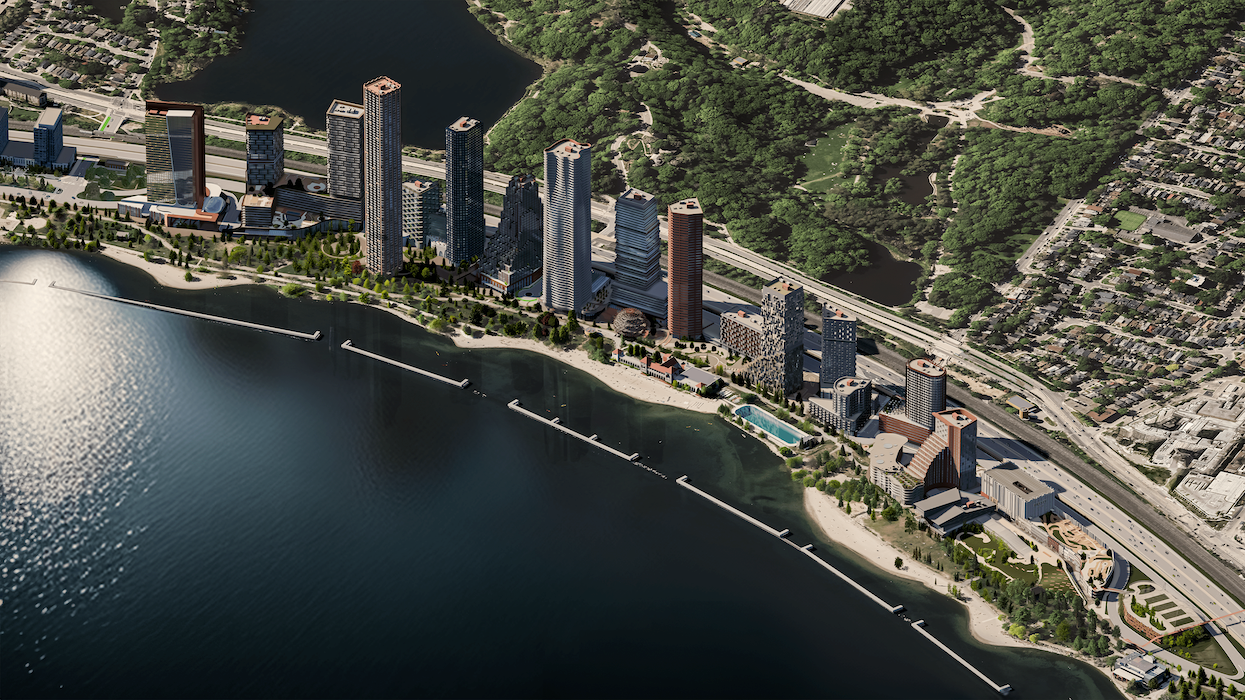This article was written and submitted by Brent Haynes, an architectural designer in Toronto.
Toronto is sitting on a real estate goldmine. Stretching from Ellis Avenue to the Roncesvalles Pedestrian Bridge, this land represents untapped potential. Its current conditions reflect an era of urban planning more concerned with accommodating cars than people, leaving valuable waterfront disconnected from the community.
Today, the seven lanes of Lakeshore Boulevard West twist and turn along the waterfront, cutting off any form of direct or pleasant pedestrian access. While it may be too late to revert the poor decision of placing a high-traffic corridor along one of the city’s most valuable natural assets, we still have a chance to reclaim the under-utilized buffer land surrounding it.
“Waterfronts are inextricably linked to the identity and vitality of cities”; they should be vibrant hubs of living, recreation, culture, and connection. Cities such as Chicago, Copenhagen, and Sydney have prioritized their waterfronts in city planning, centralizing them as lively urban spaces that reflect civic pride. By contrast, Toronto’s Western Beaches waterfront feels more like an afterthought. A small shift in road placement and parking management could change all of that.
By moving Lakeshore Boulevard West closer to the Gardiner and shifting surface parking into structured facilities, we could unlock 30 acres of new land for residential development. This stretch of land — 80 meters wide and 1.4 kilometres long — represents a staggering real estate opportunity, capable of supporting over 7,500 new homes. And, unlike most urban developments, this wouldn’t encroach on any space that is accessible, utilized, or treasured by pedestrians today.
But this opportunity is about more than just real estate, it’s also about addressing Toronto’s dual crises of housing shortages and accessible park space. The GTA is projected to grow by over three million in the next 20 years or so, and reworking the Western Beaches waterfront offers a chance to tackle these challenges without sacrificing one for the other.
The Parkshore Master Plan proposes a bold reimagining of this area and focusses on creating a community that integrates seamlessly with the waterfront, while also providing the necessary housing and amenities. While, for now, it may only be a considered an “Illustrative exercise,” it is still an extensive vision that has been handed to the city on a silver platter.
If the city were to act on this, it could generate upwards of $920 million from land sales alone, based on the proposal’s gross floor area, according to valuations from Bullpen Research and Consulting 2023 Land Insights Report. And let’s be clear, this conservative analysis doesn’t even account for the waterfront premium, development charges, or the influx of property tax revenue that could be garnered from such a project.
CreateTO, the organization tasked with managing the city’s real estate, has already demonstrated the ability to oversee such transformative projects with a portfolio of “8,446 properties, 6,976 buildings, and more than 105 million square feet”. You could argue that they are uniquely positioned to guide this venture in a way that could benefit both current and future residents alike.
So why not turn under-utilized land into a vibrant community that reflects the best of Toronto? A slight shift in urban planning could unlock untold potential, allowing us to take advantage of the city’s waterfront while addressing some of its most pressing needs.
The city is sitting on a goldmine. All it needs to do is dig.





















